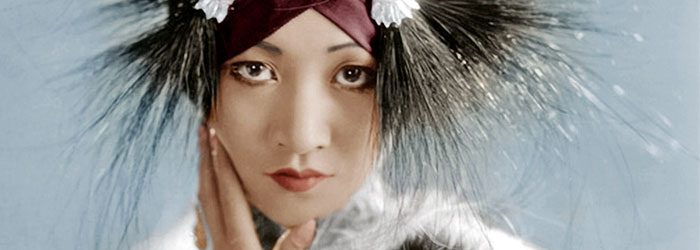
(Photo by Courtesy Everett Collection)
Anna May Wong made her lead debut in 1922’s The Toll of the Sea, and in the century that’s passed she is remembered as the first Asian-American of several distinctions. The first Asian-American Hollywood star. Later, the first Asian-American to lead a TV series. The Toll of the Sea? The first available color film. And now Wong is the first Asian-American on American currency as part of a series of historical women-tributed quarters. Wong’s chunk of a buck depicts her with head resting on hand as her gaze climbs upwards diagonally over an iconic bob haircut.
Born in Los Angeles, Wong was just 17 when she took the lead in The Toll of the Sea. Revitalizing the melodramatic foundation of Madame Butterfly, Toll is the first surviving color film and was considered lost until its restoration in the mid-’80s. Wong blossomed into a full-fledged star in the classic 1924 fantasy The Thief of Bagdad, standing out against Douglas Fairbanks.
But disillusionment over her career prospects set in quickly, and Wong moved to Europe chasing less stereotypical role opportunities. It’s a move with latter-day echoes, such as Bruce Lee leaving America for Hong Kong to start his run into Enter the Dragon, or Ke Huy Quan‘s decades-long absence from the screen until Everything Everywhere All At Once.
As reported by The Los Angeles Times, Wong explains: “I was so tired of the parts I had to play. Why is it that the screen Chinese is nearly always the villain of the piece, and so cruel a villain – murderous, treacherous, a snake in the grass. We are not like that.”
In Europe, Wong released seven films across 1929 and 1930 in a mixture of English, French, and German films, with Picadilly the most widely seen. Wong was back in the States by 1931, working mainly under contract with Paramount. The first of those films, Daughter of the Dragon, saw the only time Wong acted against another Asian actor of her stature, the Japanese matinee idol Sessue Hayakawa. At the same time, Daughter featured Swedish actor Warner Oland (who would go on to cap his career in yellowface with the Charlie Chan films) as Fu Manchu.
Filming was steady in this period, which included the Marlene Dietrich vehicle Shanghai Express and a lauded adaptation of the Sherlock Holmes classic story A Study in Scarlet. But Wong was fearless and frank in her public appraisal of the work, describing Daughter of the Dragon and Oland’s Fu Manchu character as “so wicked” just two years after the fact.
MGM denying her the lead role in 1937’s The Good Earth in favor of Luise Rainer led Wong to leave Hollywood again for China in what she hoped would be a journey of spiritual discovery. When she returned to Los Angeles a year later, Wong concluded, “I am convinced that I could never play in the Chinese theater. I have no feeling for it. It’s a pretty sad situation to be rejected by the Chinese because I’m too American.”
Wong picked up business again with Paramount in her final major studio contract. Daughter of Shanghai, Island of Lost Men, and King of Chinatown allowed her to put out more positively portrayed characters, but the films’ lack of traction with audiences convinced her to retire from serious filmmaking in 1942, at the age of 37.
There were guest TV stints and occasional film roles in the following decades. 1951 saw the premiere of The Gallery of Madame Liu-Tsong, in which Wong played a detective and became the first Asian-American actress to lead a series. The show met the same fate as most that aired on DuMont (an early rival of NBC and CBS) – dumped into the New York East River by the 1970s – so no scripts or full episodes of Gallery are known to exist. In 1960, Wong received a star on the Hollywood Walk of Fame, one year before her death. —Alex Vo